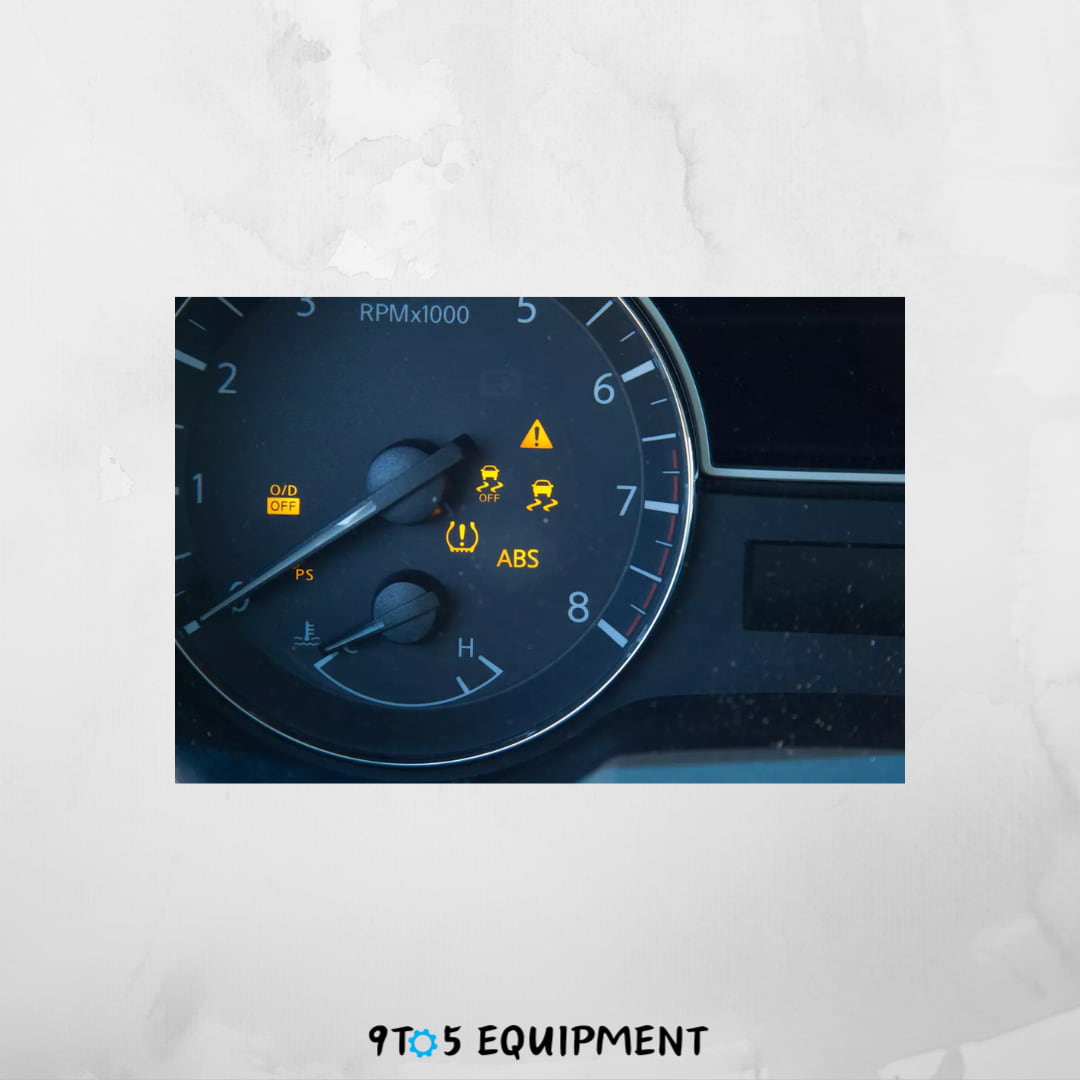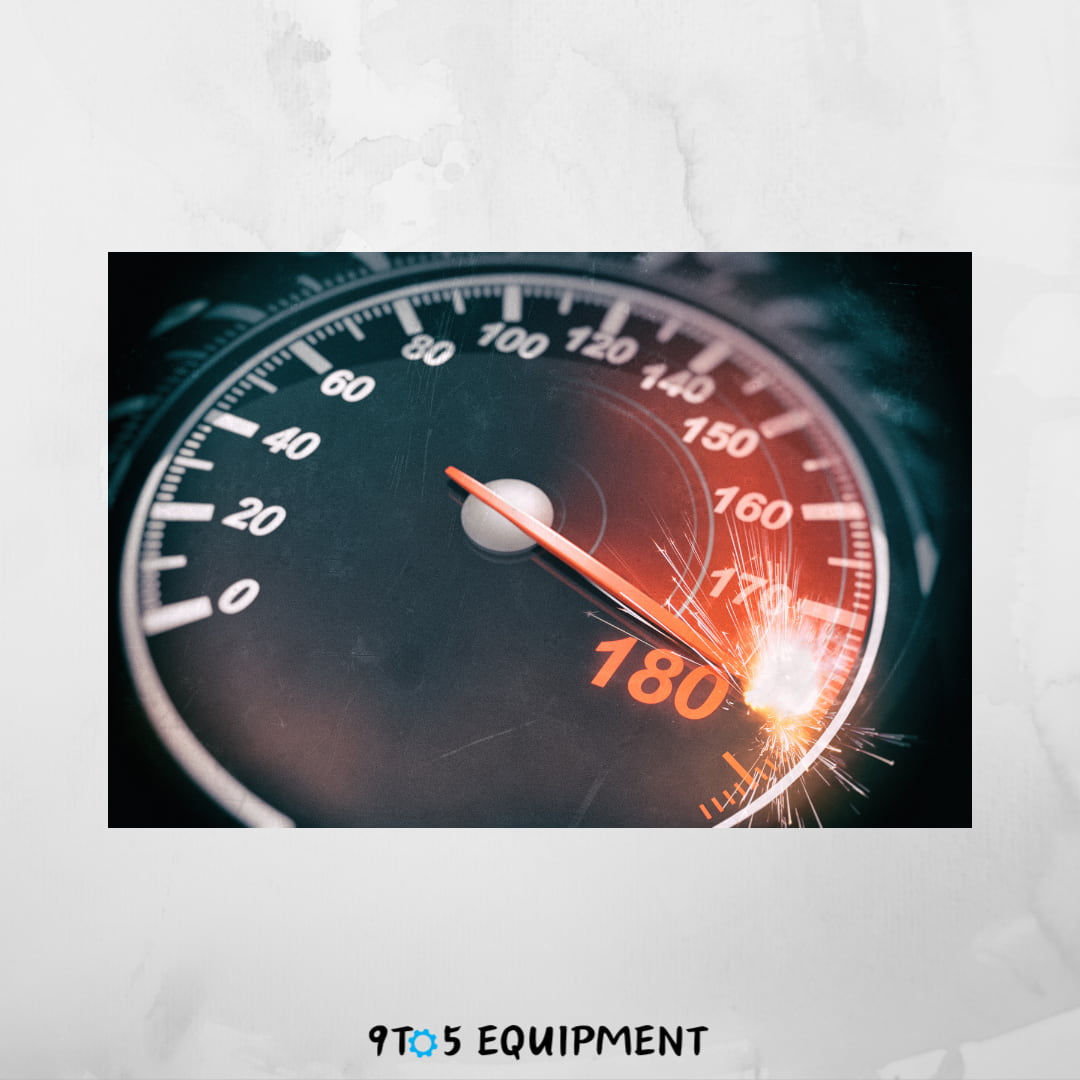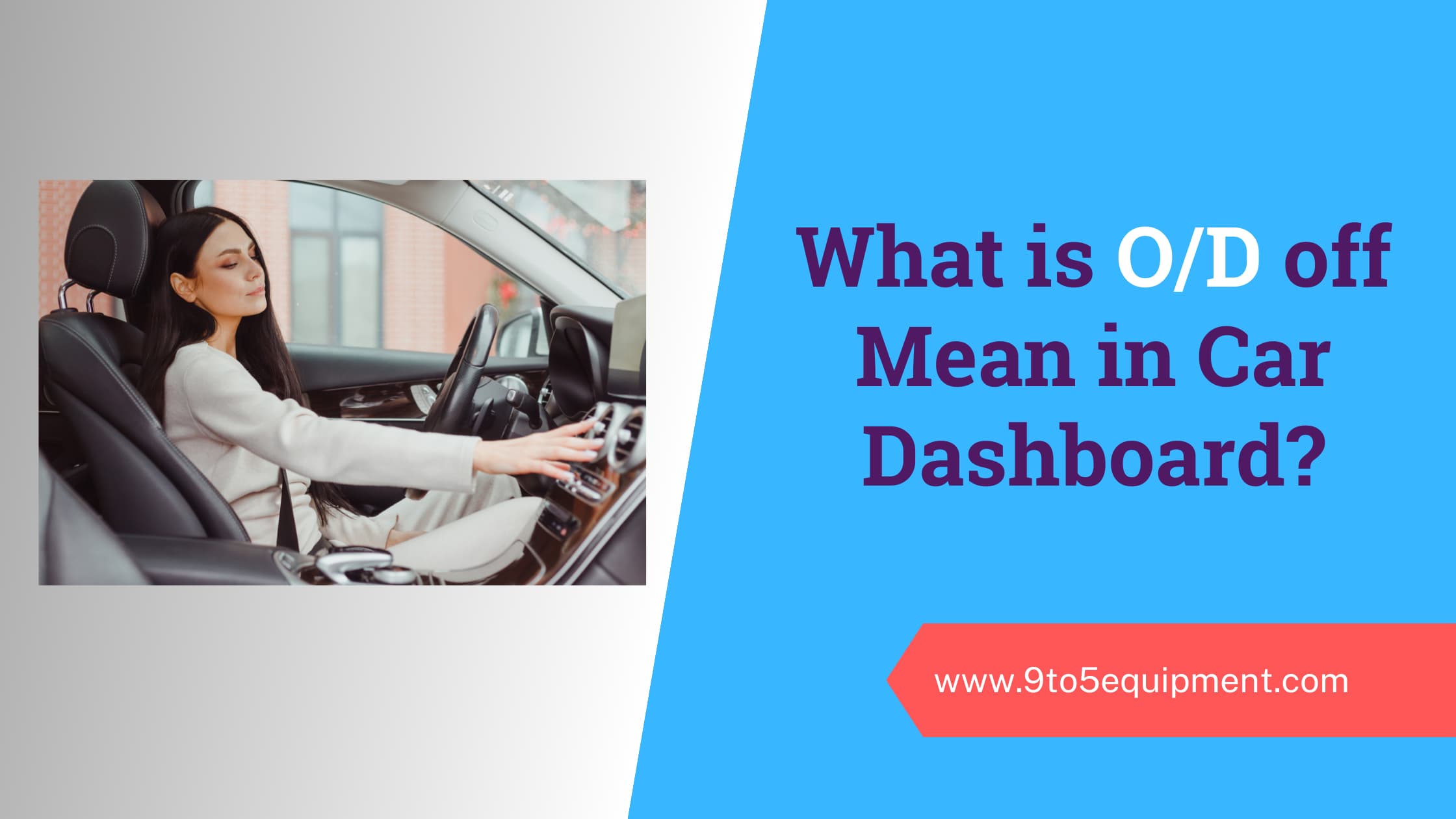O/DO/D. It is a control in the car dashboard that represents whether the mechanism is turned on/off. By default, O/D is set in the off state (the indicator light will turn on), at this position, the mechanism set for faster movement will get disabled i.e the top gears in the transmission will become inactive. When turned on, (the indicator light will turn off), the mechanism will become active. And the limits set to the top speed will get disabled and you’re allowed to accelerate over the limit.
To clear all your doubts on Overdrive, this guide will help you understand everything about Overdrive and how to use Overdrive according to road conditions and speeds. Also, if you’re here to know whether to turn it on/off, stick to the page and know everything about what is O/D off Mean on Car Dashboard and the purpose behind that engineering marvel.
Everyone who owns a car and sits in front of the steering wheel looks for a comfortable and safe ride? Isn’t it. Today, most of the cars coming out of the manufacturing hubs are not fully mechanical-based vehicles since the combination of electronic gadgets and outstanding designs has been proven in offering better safety and comfort than any invention in the past. One such futuristic device attached to the gear system of a car is ‘Overdrive’ or OD. A device that is uniquely designed to give better performance by reducing the stress on a car engine.
In simple words, Overdrive is a special and highest gear in an automatic transmission car. Its main purpose is to reduce the engine RPM to a certain speed to accelerate and make the vehicle more fuel-efficient. Let’s dive further into the post to know everything about this powerful mechanism built-in back of the car.
What is Overdrive (O/D)
Overdrive is the highest gear in an automatic transmission vehicle that is designed to lower the engine’s RPM during high-speed highway or country road driving. It is a component of a transmission system and is mounted at the end of the gearbox. When enabled, it provides high rotation per minute to the output shaft with reduced engine rotation per minute which in turn provides smooth, noise-free, and high fuel economy to the vehicle.
Generally, in a normal transmission direct drive system, the highest gear produces a 1:1 gear ratio between the clutch and the transmission shaft. But, Overdrive maintains the gear ratio and provides a speed ratio higher than that of the normal transmission system.
We all know that in low gears the engine creates more power but this causes the gear ratio to rise above one. But, a vehicle in Overdrive has a gear ratio between 0.6 and 0.8. This allows you to drive faster with a low RPM (revolution per minute) since Overdrive creates a very fast rotation of your wheels in one minute. Therefore continuous acceleration is not required when driving on a highway.
What are O/D off/on Signals

One of the most important symbols that every car driver should learn about. The overdrive signal in the car dashboard is just an indication representing whether the mechanism is turned on/off. By default, O/D is set in the off state (the indicator light will turn on), at this position, the mechanism set for faster movement will get disabled i.e the top gears in the transmission will become inactive. When turned on, (the indicator light will turn off), the mechanism will become active. And the limits set to the top speed will get disabled and you’re allowed to accelerate over the limit.
It’s a little bit confusing for new seaters because O/D off, the default position of Overdrive, turns on the signal light. At this position, Overdrive is off. But, when you press the button, the indicator will go off and Overdrive comes into an active state.
To free your mind from the confusion, forget about the indicator light and have a look at the differences.
O/D off (the indicator light will turn on) – It is the default position of Overdrive and is in the off state. This means the top gears of the transmission system will go through the gears and then limit the functioning of other gears i.e O/D off locks the top gear 4 for safe driving in bad weather conditions and to help you drive more efficiently.
O/D on (the indicator light will turn off) – The car in this state reaches a higher speed in less than a minute and the top gear 4 acts as an overdrive gear. This allows the vehicle to run at reduced RPMs in lower gears while cruising on roads. Also, it decreases the strain on both engine and drivetrain by increasing fuel economy.
When and Where to Use Overdrive?

Overdrive inserted in an automatic transmission vehicle is not only for taking control of the highest gear in the transmission. The true purpose of Overdrive is all about reducing engine RPMs and stress at high speed by consuming less fuel. This leads to a better fuel mileage ratio and reduced noise and wears in the suspension system.
To protect your car and to extend the life of each and every part that controls the moment of the car, there are some limitations on when and where to use Overdrive. Whether you’re a professional or not, before turning on the ignition, you’ve to know when and where to use Overdrive. So, finish reading this post and go safer, greener, and more comfortable.
If you’re going to face any of the following situations, make sure that the indicator O/D off is turned on.
- Pulling a large load
- Driving up or down large hills
- Off-roading
- Towing a trailer
- Traffic jams and
- Unstable speed
All these conditions are not ideal to turn on the Overdrive because constant changing of gears and speed creates unwanted stress on the engine and causes unneeded damage to your vehicle and the suspension system.
To experience Overdrive, long, flat, open roads, and highways are the best place to enjoy the benefits that come with this feature.
Read More: Car Overheating Then Going Back to Normal – How to Fix
Is it Safe to Turn on Overdrive all the Time?
Overdrive is the highest gear in a vehicle transmission system. Turning it on all the time is not safe for your vehicle because the mechanism of Overdrive is designed for constant speeds i.e above 50 Kmph. The best place to ride a car by turning on Overdrive is long, flat, open roads, and highways. And the situations you’ve to stick to the default position i.e O/D off is, Pulling a large load, Driving up or down large hills, Off-roading, Traffic jams, etc.
Therefore, to protect your car as well as to extend the life of the engine and the parts connected to it, don’t stabilize the position of Overdrive all the time while driving a car.
How Does Overdrive Work?
Overdrive mounted between transmission and the propeller shaft works by unlocking the highest gear in your vehicle transmission. When you turn on Overdrive, the vehicle reaches a higher speed in less than a minute and the top gear 4 acts as an overdrive gear. This allows the vehicle to run at reduced RPMs in lower gears while cruising on roads. Also, it decreases the strain on both engine and drivetrain by increasing fuel economy
If Overdrive is in the default position, the top gears of the transmission system will go through the gears and then limit the functioning of other gears i.e O/D off locks the top gear 4 for safe driving in bad weather conditions and help you drive more efficiently.
Does Overdrive off save gas?
Burning more gas while driving a car depends on various factors such as speed, type of road, tuning the air conditioner on, switching to Eco Mode, etc. The change in speed also burns more fuel. When we talk about Overdrive in saving gas, turning it on boosts the speed as well as saves gas. But, if you turn off this mechanism, the transmission shifts to direct drive resulting in more gas to burn.
How to turn off Overdrive?
Controlling overdrive doesn’t need any skills because it is just a button and is attached either to your car dashboard or on the left side of the gear lever. To know whether it is turned on/off, just follow the indicator i.e if the indicator light doesn’t come on, there’s no doubt to say that this function is active. Then turn it off by pressing the button.
Situations to turn off Overdrive?
If you own an automatic transmission car, taking control of it via Overdrive has some limitations and situations.
Overdrive mounted at the end of the gearbox provides high rotation per minute to the output shaft with reduced engine rotation per minute which in turn provides smooth, noise-free, and high fuel economy to the vehicle. Therefore, you’ve to use it accordingly i.e the best time to use Overdrive is on long, flat, open roads, and highways after reaching enough speed by maintaining a relatively constant high speed.
When the O/D Off Indicator flashes?
It’s a little bit confusing for new seaters because O/D off, the default position of Overdrive, turns on the signal light. At this position, Overdrive is off. But, when you press the button, the indicator will go off and Overdrive comes into an active state. These two are the only representations that indicate O/D is on/off. But, the O/F indicator flashing is a sign of error in the system.
If you see the O/D Off indicator flashing, make sure there is a problem with the system. Then, immediately turn off Overdrive and reach the nearest garage. Some of the reasons that fail the mechanism are automatic fluid leakage or automatic fluid blockage during the exchange.
When you want to shift to a lower gear?
Overdrive is designed for constant speeds i.e above 50 or 70 Kmph. Turning it on all the time will damage the entire mechanism. When you want to shift to a lower gear, make sure that the indicator O/D off is turned on while Pulling a large load, Driving up or down large hills, Off-roading, Towing a trailer, in Traffic jams, and at Unstable speed. Because all these conditions are not ideal to turn on the Overdrive because constant changing of gears and speed creates unwanted stress on the engine and causes unneeded damage to your vehicle and the suspension system.
Therefore, before shifting to a lower gear, don’t forget to turn off Overdrive.
When you want to drive without using high gear?
Every road you step in with your car has designed speed limits. When you want to drive without using high gear, turn off Overdrive to let the transmission shift to direct drive and then drive in lower gears.
The conditions that are not ideal for turning on Overdrive are Pulling a large load, Driving up or down large hills, Off-roading, Towing a trailer, Traffic jams, and Unstable speed. All these are the best places to drive without using high gear.
Advantages of Overdrive
Overdrive attached at the end of the gearbox of your car offers insane features when you’re moving at high speeds. If you’re here to know about the advantages of O/D off/on, finish reading this post before turning on the ignition.
- Lower Fuel Consumption
When compared to direct drive, the engine using the Overdrive gear consumes less fuel.
- Less Noise
Overdrive gear provides less noise because it provides high rotation per minute to the output shaft with reduced engine rotation per minute which in turn offers smooth, noise-free, and high fuel economy to the vehicle.
- Fewer Emissions
The direct drive which allows you to use up to 3 gears produces more emissions but Overdrive unblocks the highest gear and reduces the emissions accordingly because it lowers the engine RPMs and reduces stress on it.
- Extends Engine Life
The purpose of Overdrive is to reduce stress on the engine by lowering the RPMs without any change in speed. It means the vehicle will move accordingly but with lesser RPMs. Hence, this action will extend the engine life.
- Longer Accessory Life
When you’re cruising on highways by engaging Overdrive, the smog pump, water pump, alternator, A/C compressor, power steering pump, and others will turn at lower RPMs. As a result, all these parts have a longer lifespan due to overdrive slowing down their work rates.
Read More: Best Cleaner For Car Interior Plastic
Frequently Asked Questions
- What is the best place to turn on Overdrive?
The best time to use Overdrive is on long, flat, open roads, and highways after reaching enough speed by maintaining a relatively constant high speed.
- Is it safe to turn off Overdrive while towing a trailer?
Yes, it is safe to turn off Overdrive while towing a trailer. In addition to it, if you’re going to face any of the following situations, make sure that the indicator O/D off is turned on while Pulling a large load, Driving up or down large hills, Off-roading, Towing a trailer, Traffic jams, and Unstable speed. Because all these conditions are not ideal to turn on the Overdrive because constant changing of gears and speed creates unwanted stress on the engine and causes unneeded damage to your vehicle and the suspension system.
- Should I always turn on Overdrive?
Overdrive is the highest gear in a vehicle transmission system. Turning it on all the time is not safe for your vehicle because the mechanism of Overdrive is designed for constant speeds i.e above 50 or 70 Kmph according to the model you own.
- How to identify whether the Overdrive is turned on/off?
It’s a little bit confusing for new seaters because O/D off, the default position of Overdrive, turns on the signal light. At this position, Overdrive is off. But, when you press the button, the indicator will go off and Overdrive comes into the active state. To easily remember, check the name (O/D off/on) given on your dashboard and forget about the indicator light.
- How to turn on/off Overdrive?
Controlling overdrive doesn’t need any skills because it is just a button and is attached either to your car dashboard or on the left side of the gear shifter.
Final Words
For a safer, greener, and more comfortable ride, take total control of your car as well as save fuel and let the engine free from stress without any deceleration in speed using Overdrive. The automated mechanism of your car. With this post, we’ve detailed everything about Overdrive, the meaning and importance of the O/D off/on mark on your dashboard, and the necessity of using it. Hope you got an idea of what is O/D off mean on the car dashboard and when and where to use Overdrive.
So drivers, share this post with your partners and safely move on by saving fuel at higher speeds. For any queries, drop a message in the comment section below.







